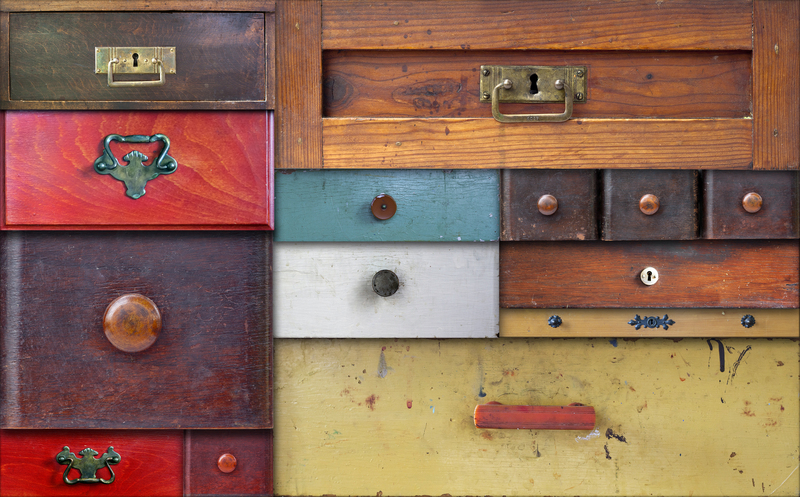Transform Your Home Control with These Clutter Management Tips
Are you battling clutter and chaos at home? Effective clutter management can not only make your spaces look beautiful and organized, but also empower you to take control of your home and life. Whether you live in a cozy apartment or a sprawling family house, the art of decluttering influences peace of mind, productivity, and even your health. In this in-depth guide, discover actionable strategies to turn your house into a calm, well-managed haven.
Why Is Clutter Management Essential for Modern Homes?
Clutter is more than just a visual nuisance. It can *dramatically affect* your mood, stress levels, and ability to relax. With remote work and family activities blending into home life more than ever, creating an organized environment has become crucial.
- Improved Focus: Studies show that organized surroundings boost concentration and overall well-being.
- Reduced Stress: Minimal clutter offers mental clarity, making everyday tasks smoother.
- Time Savings: No more frantic searches for lost items - everything has its place.
- Enhanced Aesthetics: A clutter-free home is always more inviting and appealing.
By mastering home organization and clutter control, you're setting the stage for healthier habits and a happier living space.

First Step: Assess and Establish Your Clutter Hotspots
Before diving into sorting bins or labeling shelves, identify the trouble areas. Walk room-by-room and make a quick list of spaces that attract the most clutter. Common hotspots include:
- Entryways and mudrooms
- Kitchen counters and pantries
- Living room surfaces
- Bedroom closets and drawers
- Bathrooms
- Home offices or work corners
Pro Tip: Take "before" photos to track progress and stay motivated as you transform your environment.
Setting Realistic Goals
Set SMART goals: Specific, Measurable, Achievable, Relevant, Timely. Instead of decluttering your entire home in one weekend, break it down: "I will organize the kitchen drawers by Friday."
Step-by-Step Clutter Management Strategies
1. The Four-Box Method for Decluttering Control
One of the most effective ways to begin clutter management is the four-box system:
- Keep: Essential and loved items.
- Donate/Sell: Things you no longer need but in good condition.
- Trash/Recycle: Broken, expired, or unusable items.
- Relocate: Useful items that belong elsewhere.
Go through each room, item by item. Be honest - if you haven't used something in months (or years), it's time to let go.
2. Regular Routines: The Secret to Sustained Home Control
Consistency is vital. Establish daily and weekly routines to manage clutter before it accumulates.
- Daily: Spend 10 minutes tidying surfaces and returning items to their places.
- Weekly: Deep-clean a different area each week to keep the cycle moving.
- Monthly: Review donated and trashed items; update storage solutions if needed.
3. Storage Solutions That Transform Spaces
A clutter-free home is all about smart storage. Evaluate the unique storage needs of each space:
- Entryways: Use baskets, wall hooks, or benches with cubbies for shoes, umbrellas, and bags.
- Living Areas: Incorporate attractive shelving, coffee tables with drawers, or hidden ottoman storage.
- Bedroom: Utilize under-bed totes, closet dividers, and vertical shelving to maximize small spaces.
- Kitchen: Stackable bins, lazy Susans, and drawer organizers simplify food storage.
- Bathrooms: Install shelves over toilets or use tiered trays and over-door racks for toiletries.
Labeling is a simple yet transformative tactic to keep everyone in the house aligned. When everything has a defined place, clutter has nowhere to accumulate.
4. Paper and Digital Clutter Management
Don't forget "invisible" clutter! Mail, bills, school papers, and digital files can quickly overwhelm your control over your home. Tame them by:
- Setting up a mail station: Dedicate a tray for incoming and outgoing mail. Sort daily.
- Digitizing documents: Scan important papers (taxes, warranties, etc.) and recycle originals when possible.
- Managing digital files: Set calendar reminders to purge downloads, screenshots, and emails once a month.
Smart Home Tools that Enhance Clutter Management
Leverage technology to streamline home control and clutter organization.
- Label printers: Make clear labels for bins, shelves, and folders.
- Inventory apps: Track pantry items, cleaning supplies, or clothing digitally to prevent redundant purchases.
- Calendar reminders: Schedule decluttering sessions and regular home resets in your phone.
- Smart storage devices: Consider automated closet organizers or intelligent shelving solutions for high-efficiency control.
The Psychological Benefits of Clutter-Free Living
Beyond aesthetics and time savings, decluttering delivers impressive mental health benefits:
- Reduced Anxiety: Organized environments are proven to lower cortisol, the stress hormone.
- Better Sleep: A peaceful, uncluttered bedroom lets your brain relax at night.
- Enhanced Productivity: With visual distractions minimized, you can work or focus more easily.
- Increased Happiness: Taking daily control fosters a greater sense of accomplishment and pride in your home.
Declutter by Category: The Marie Kondo Approach
The popular KonMari method encourages tidying up by category, not room - for example, all books, then all clothes, and so on. This tactic helps you fully realize what you have and makes it easier to decide what truly sparks joy and what can be released.
Quick Start Steps:
- Gather all similar items in one spot.
- Hold each item and ask if it adds value to your life.
- Keep only those that inspire joy, utility, or meaning.
This approach not only streamlines the process but also shifts your relationship with your possessions for lasting clutter control.
Family Involvement: Teaching Clutter Control to Kids
Transforming your house is a team effort. Teaching kids and teens about home organization gives them valuable life skills.
- Make it fun: Use timers, reward systems, and music during family clean-ups.
- Give ownership: Let children choose storage containers and decorate labels for their belongings.
- Establish rules: "One in, one out" policy for toys, books, or clothes prevents future clutter.
- Model behaviors: Kids learn by example - keep your own spaces tidy too!
Decluttering for Small Spaces
Whether you live in a studio apartment or a compact urban home, clutter management is crucial to getting the most from your square footage. Here are space-saving hacks:
- Opt for multipurpose furniture like futons, Murphy beds, and nesting tables.
- Use vertical space - install shelves above doors, desks, and cabinets.
- Rotate seasonal items in and out of storage to minimize overcrowding.
- Edit your belongings ruthlessly - only essentials stay on display.
- Utilize clear containers to make it easier to find stored items without emptying everything out.
Maintaining a Clutter-Controlled Home: Tips for Lasting Change
Decluttering is only the beginning; maintenance ensures lasting transformation. Use these tips for ongoing home control:
- Adopt the "one-minute rule": If a task takes less than a minute (putting away shoes, filing a paper), do it immediately.
- Practice regular purges: Schedule a mini-declutter every season to prevent accumulation.
- Resist impulse purchases: Before bringing new items home, ask: "Do I have a place for this?"
- Stay accountable: Use checklists or involve friends for encouragement and support.
Clutter Management and Sustainability
Modern home control goes hand-in-hand with sustainability. Reduce, reuse, recycle, and donate as part of your organization journey:
- Donate
gently used items to local shelters, charities, or thrift stores. - Recycle
responsibly, following your area's guidelines for paper, electronics, batteries, and plastics. - Upcycle
old containers, jars, or crates for inventive storage solutions.
Troubleshooting Common Clutter Challenges
If you find yourself losing control repeatedly, you're not alone! Here's how to tackle persistent problem areas:
- Surface clutter returns: Re-assess whether you have a dedicated storage solution for each item.
- Overflowing drawers/closets: Enforce the "one in, one out" rule strictly.
- Paper pileups: Move as many bills, statements, and communications as possible to digital versions.
- Family resistance: Have open discussions about why organization matters and how it benefits everyone.

Clutter Management Tips: Frequently Asked Questions
-
How often should I declutter my house?
Small daily and weekly routines are most effective, with bigger purges every season. -
Where do I start if I'm overwhelmed?
Begin with a single drawer or corner. Quick wins provide the motivation to tackle larger areas. -
How can I keep my house clutter-free with kids?
Get children involved early, establish clear storage systems, and maintain regular check-ins together. -
What are the best storage solutions for small homes?
Opt for vertical shelves, multipurpose furniture, and storage under beds, stairs, or sofa seats.
Conclusion: Bring Lasting Home Control with Smart Clutter Management
By following these practical, actionable tips, you'll transform more than just your home's look--you'll reclaim your time, energy, and peace of mind. Effective clutter management empowers you to enjoy every room with confidence and brings harmony to your everyday routines.
Ready to take control? Start today by tackling just one area, and watch the positive changes ripple throughout your living space!
Now that you're equipped with the best strategies for home organization and clutter control, maintaining a serene, welcoming space is not only achievable - it's life-changing.